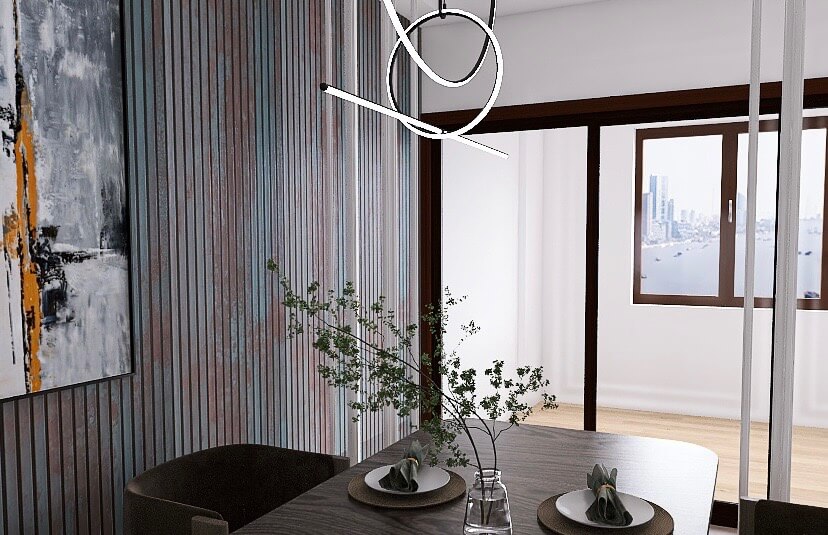When choosing the right wood for wall paneling, there are several factors to consider, such as durability, aesthetics, and cost. Selecting the ideal wood type can transform a space, making it more inviting, stylish, and functional. This blog dives into the top woods for wall paneling projects, offering insight into their benefits and ideal applications.
1. Oak: The Timeless Choice
Why Oak is Popular for Wall Paneling:
Oak is a classic and highly valued wood for wall paneling due to its durability and distinctive grain patterns. It adds a warm, elegant touch that fits both traditional and modern settings.
Benefits of Using Oak for Wall Paneling:
- Durability: Oak is a hardwood, known for its strength and long-lasting qualities.
- Versatile Appearance: It comes in both red and white varieties, each offering unique hues and grains.
- Finishing Options: Takes well to staining and polishing, making customization easy.
Best Uses: Living rooms, libraries, offices, and other areas where sophistication is desired.
2. Pine: Affordable and Versatile
Why Pine is a Top Choice:
Pine is an excellent option for those seeking cost-effective wall paneling without sacrificing aesthetics. Its light color and natural knots provide a rustic charm perfect for cozy spaces.
Key Features of Pine:
- Affordability: One of the most budget-friendly options.
- Workability: Softwood that’s easy to cut and install, ideal for DIY projects.
- Natural Beauty: Offers a warm, country-style look with its prominent knots and grain.
Drawbacks: Pine is softer than hardwoods like oak and can be prone to dents or scratches.
Best Uses: Bedrooms, family rooms, and spaces aiming for a warm, rustic feel.
3. Cedar: The Aromatic Marvel
Why Cedar Stands Out:
Cedar is favored not just for its beautiful appearance but also for its natural aromatic properties. Its distinctive scent can repel insects, making it a practical choice for paneling.
Advantages of Cedar Paneling:
- Aromatic Properties: Emits a natural scent that keeps pests away.
- Resistance to Moisture: Cedar naturally resists moisture and decay, making it great for humid spaces.
- Aesthetic Appeal: Offers rich, reddish-brown hues and a straight grain pattern.
Best Uses: Closets, basements, and bathrooms, where humidity can be a concern.
4. Mahogany: Luxurious and Refined
The Appeal of Mahogany Paneling:
Mahogany is synonymous with luxury and high-end interior design. Its deep, reddish tones add an unparalleled level of elegance to any room.
Notable Benefits of Mahogany:
- High Durability: A dense, long-lasting hardwood that withstands wear.
- Smooth Texture: Ideal for polished, high-gloss finishes.
- Classic Beauty: Adds a touch of opulence to spaces.
Drawbacks: Mahogany is one of the more expensive wood options.
Best Uses: Executive offices, upscale dining rooms, and formal living areas.
5. Walnut: Rich and Unique
Why Walnut is a Top Pick:
Walnut paneling is known for its rich, dark color and straight grain. It provides a luxurious, yet modern, appearance.
Key Advantages of Walnut Paneling:
- Distinctive Look: Offers a unique, rich brown shade with slight purplish undertones.
- Strength: A durable option, less prone to warping.
- Versatility: Pairs well with a variety of decor styles.
Drawbacks: Walnut can be more costly and is sometimes harder to source.
Best Uses: Statement walls, living rooms, and spaces meant to make a bold impression.
Guide to Top Woods for Wall Paneling
| Wood Type | Key Benefits | Ideal Uses |
|---|---|---|
| Oak | Durable, elegant grain, versatile | Living rooms, offices |
| Pine | Affordable, easy to work with | Bedrooms, family rooms |
| Cedar | Moisture-resistant, aromatic | Closets, bathrooms |
| Mahogany | Luxurious, high durability | Executive offices, dining |
| Walnut | Rich color, strong, unique grain | Statement walls, living rooms |
Tips for Choosing the Right Wood for Your Wall Paneling Project
- Budget Considerations: Pine and cedar are more budget-friendly, while mahogany and walnut may require a larger investment.
- Aesthetic Goals: Consider the grain, color, and texture of the wood to match your desired style.
- Room Conditions: Use moisture-resistant woods like cedar for humid areas.
FAQs
1. What is the most durable wood for wall paneling?
Oak and mahogany are highly durable and ideal for high-traffic areas.
2. Which wood is best for a rustic look?
Pine is perfect for rustic aesthetics due to its natural knots and warm tones.
3. Can I use any wood in humid environments?
Cedar is the best choice for humid areas because of its moisture-resistant properties.
4. What’s the most affordable wood for wall paneling?
Pine is generally the most budget-friendly option for wall paneling.
5. How do I maintain wood paneling?
Regular dusting and occasional polishing help maintain the appearance and longevity of your wood paneling.








